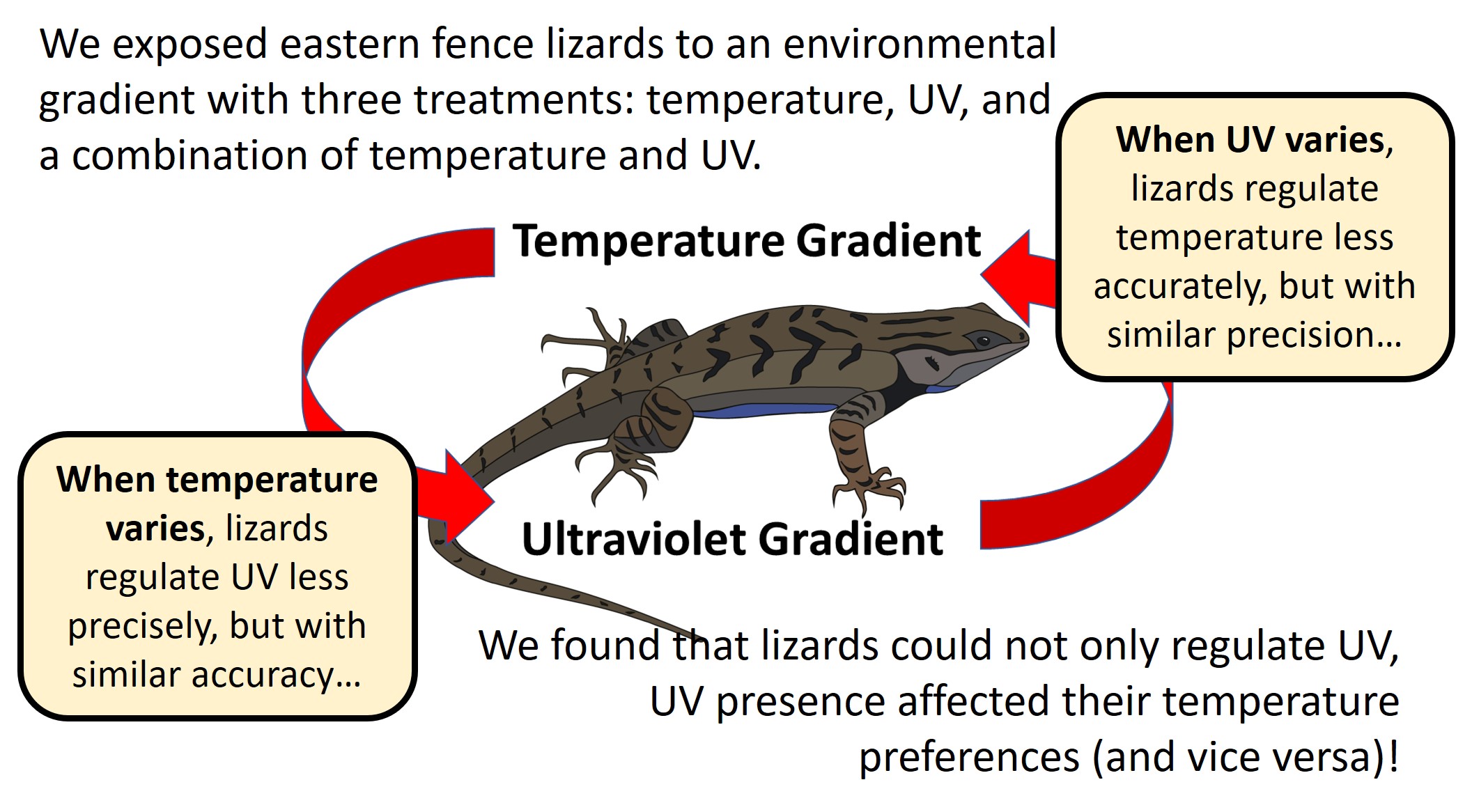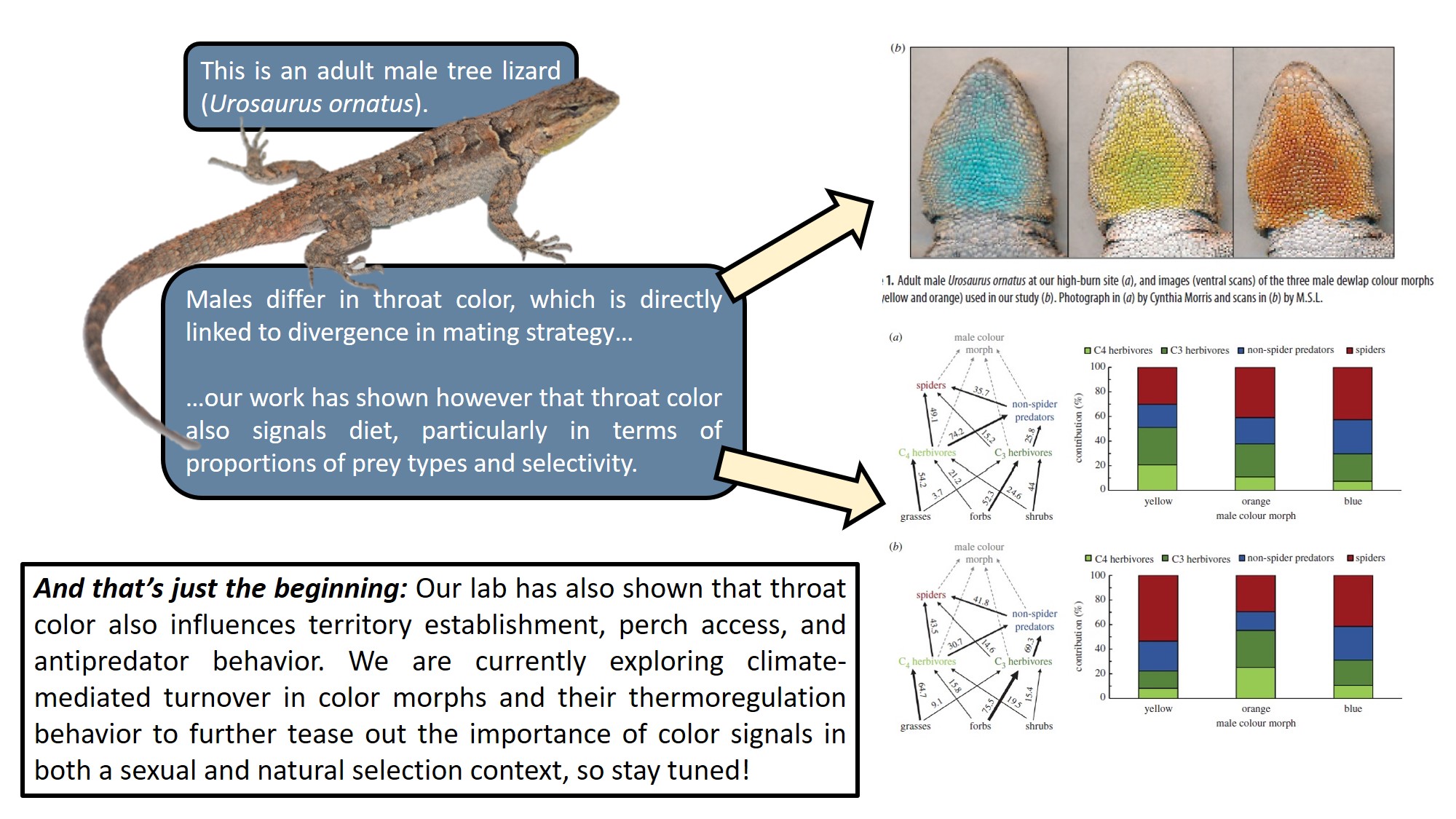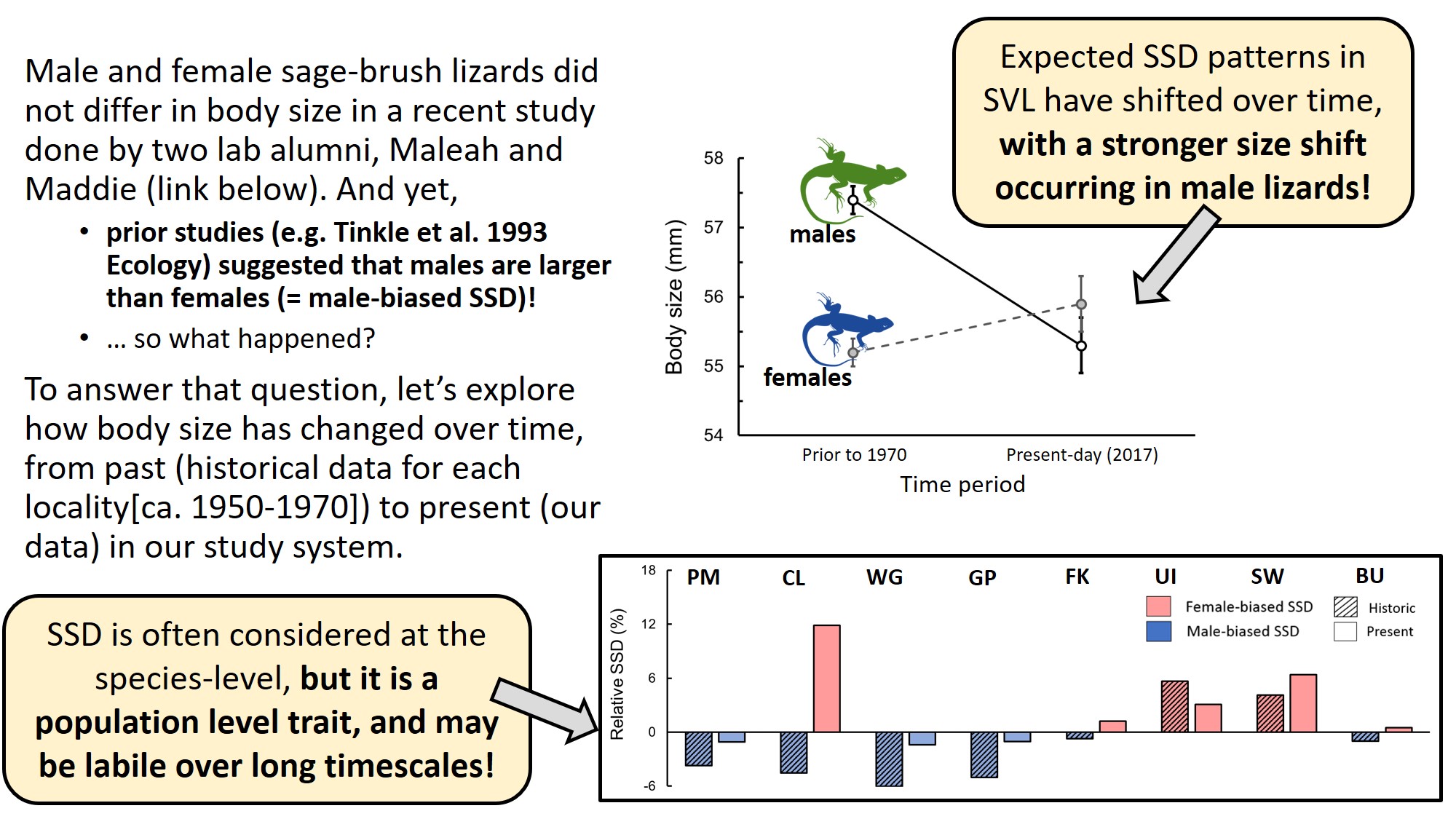Research Areas
Many reptiles bask in the sun, and for over a century this behavior was believed to function primarily for heat exchange. However, basking in the sun also ensures exposure to ultraviolet (UV) light, which is essential for producing vitamin D3. This vitamin supports vital biological functions like bone growth, digestion, survival, and reproduction. Prior lab work has also shown that too much, and too little, UV exposure can be detrimental to fitness (and in some cases, fatal). Thus, many reptiles should also regulate their UV exposure. Our lab is addressing this consideration by combining typical field and lab approaches with small-form electronics; in our first study, we found that eastern fence lizards not only behaviorally regulated their UV exposure, they also prioritized UV over the risk of overheating (see graphic below).

Over the past few years, we have created field and lab data loggers to measure UV exposure over time, allowing us to assess UV regulation as we (and others) have done for temperature regulation. These tools, and new devices and approaches we are undertaking, are currently enabling us to ask completely novel questions for even well-studied taxa, emphasizing UV needs as well as how reptiles balance their needs for warmth and UV light under different scenarios. This work not only challenges long-standing assumptions in thermal ecology but also has broader implications for predicting how reptiles might respond to climate change.
Traits like bold coloration, ornamentation, and even body size (in part) are often treated under the umbrella of sexual selection,, and their consideration therefore limited to putative role(s) in intrasexual competition or mate attraction. But these traits also have ecological ramifications; for example, dominant individuals typically also gain access to better habitat features and resources like food simply by outcompeting other individuals in the population for access to those resources. In our lab, we study how sexually-selected traits influence ecological roles within and among populations. Recently, we've explored how color morphs in tree lizards covary with their microhabitat selection and trophic niche occupancy; effectively, male morphs with consistent behaviors also exhibited consistent diets over space and time (see graphic below). Our integrative approach combines studies of behavior, physiological performance, morphology, and trophic analysis (via stable isotopes) to understand how traits linked to sexual selection can also affect ecological performance.

Climate change is one of the most pressing ecological problems wildlife face in recent decades; in many ways, understanding how they cope with this growing stressor is paramount. From an organismal perspective, many studies focus on shifts in body size as a "universal" ecological response to climate change. In our lab, we are expanding on (and testing) that assumption within a life history-grounded framework, considering not only body size but other traits key to ecological success as well, including diet selection. This work has primarily focused on recent (since 1950) climate change, using museum collections as a means for historical physiological and ecological data and contemporary field surveys for present-day data. We also take on space-for-time approaches, e.g., assessments of thermal tolerance in salamanders across elevational gradients, too. We are also considering how UV regulation may influence susceptibility of species' to future climate change (and the models currently predicting extinction based on temperature alone). We hope to provide new insights into the types of traits that promote resilience in a changing world.
The graphic below illustrates some of our findings for sage-brush lizard responses to recent climate change.: effectively, recent climate change is associated with the reduction in sexual size dimorphism (SSD) in adult body size over time.

Species that occupy large geographic ranges are often assumed to be ecological generalists that do not specialize; effectively, they should exhibit a broad range of traits that are not matched to any one local environment/habitat. THus, they should not be responsive to natural selection, and overall be a 'jack of all trades' in terms of their ecological success. While true generalism is likely rare, the overall assumptions underlying it are pervasive, and it is quite common to find descriptives of wide-ranging species as simply generalist. But is that really the case? Our lab investigates the hidden variation within widespread species by taking a multivariable approach, grounded in testable hypotheses of generalism, specialism, and intermediate strategies. Aside from those assumptions, widespread species are also difficult to study; in many ways, this makes it hard for us to appreciate their potential for ecogeographic variation in physiology and ecology (e.g., imagine trying to study eastern rat snakes across their entire range). To this end, we have begun using a bias-reducing grid approach to sampling iNaturalist-based citizen science observations for locality data for species of interest, along with photographs of specimens to infer ecophysiological data as well. When combined with detailed land, forest, and climate data, we are able to test hypotheses on species difficult to study otherwise, and reveal hidden phenotypic diversity in them. Our studies on widespread species overall have implications for how we understand biodiversity, adaptation, and what it means to be a “generalist” in evolutionary ecology.
For more, visit our Publications page or contact us to collaborate.
